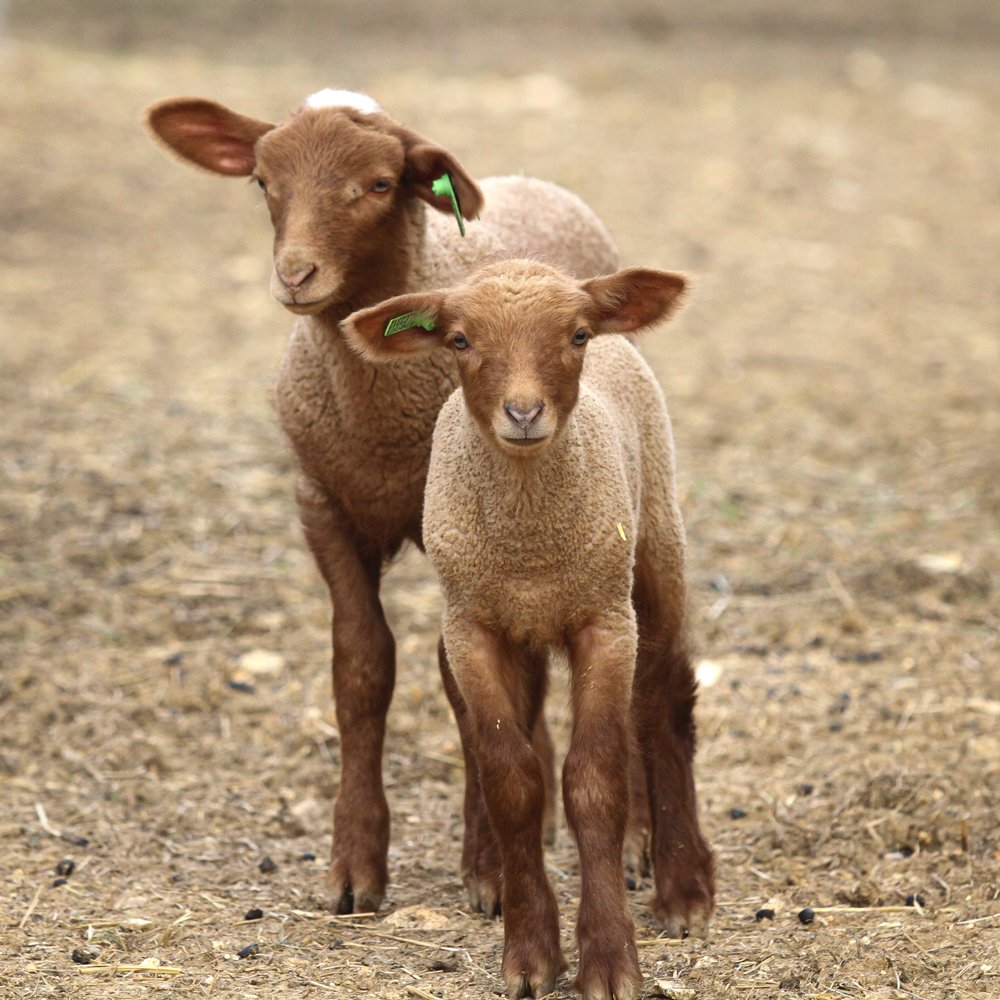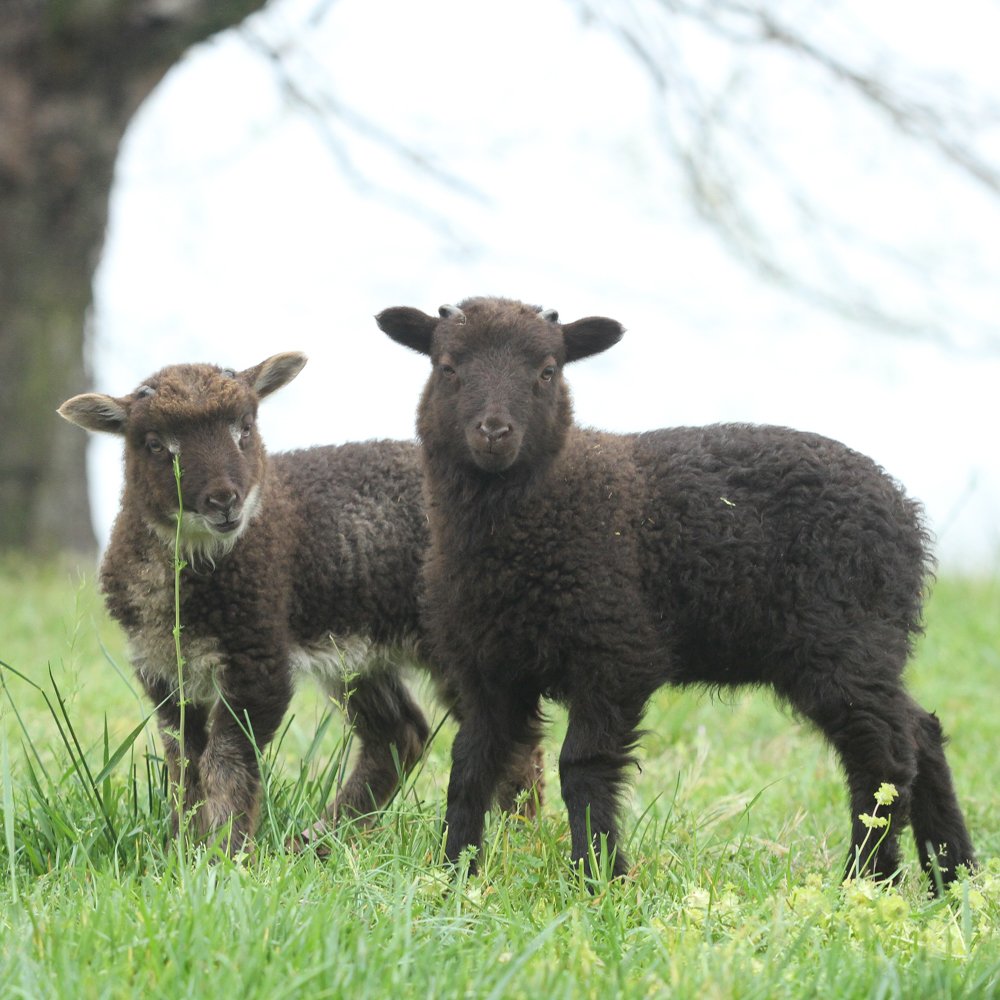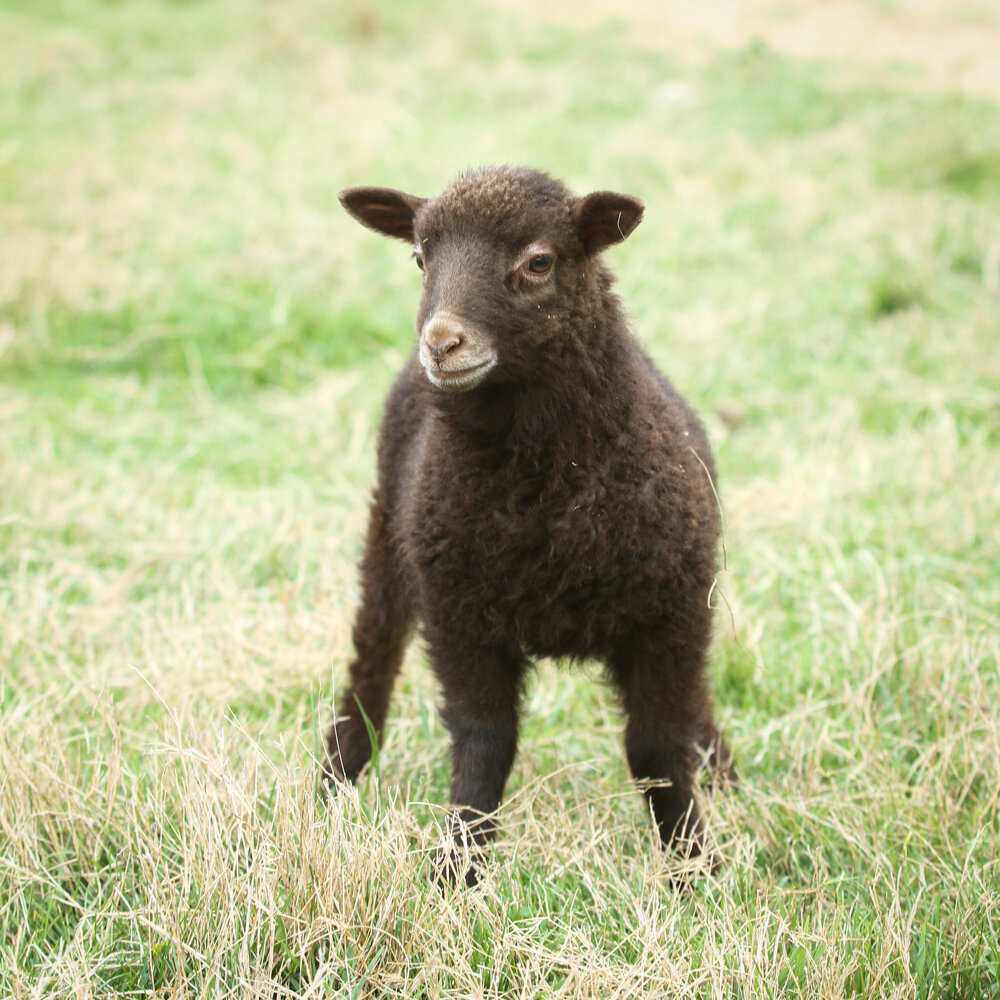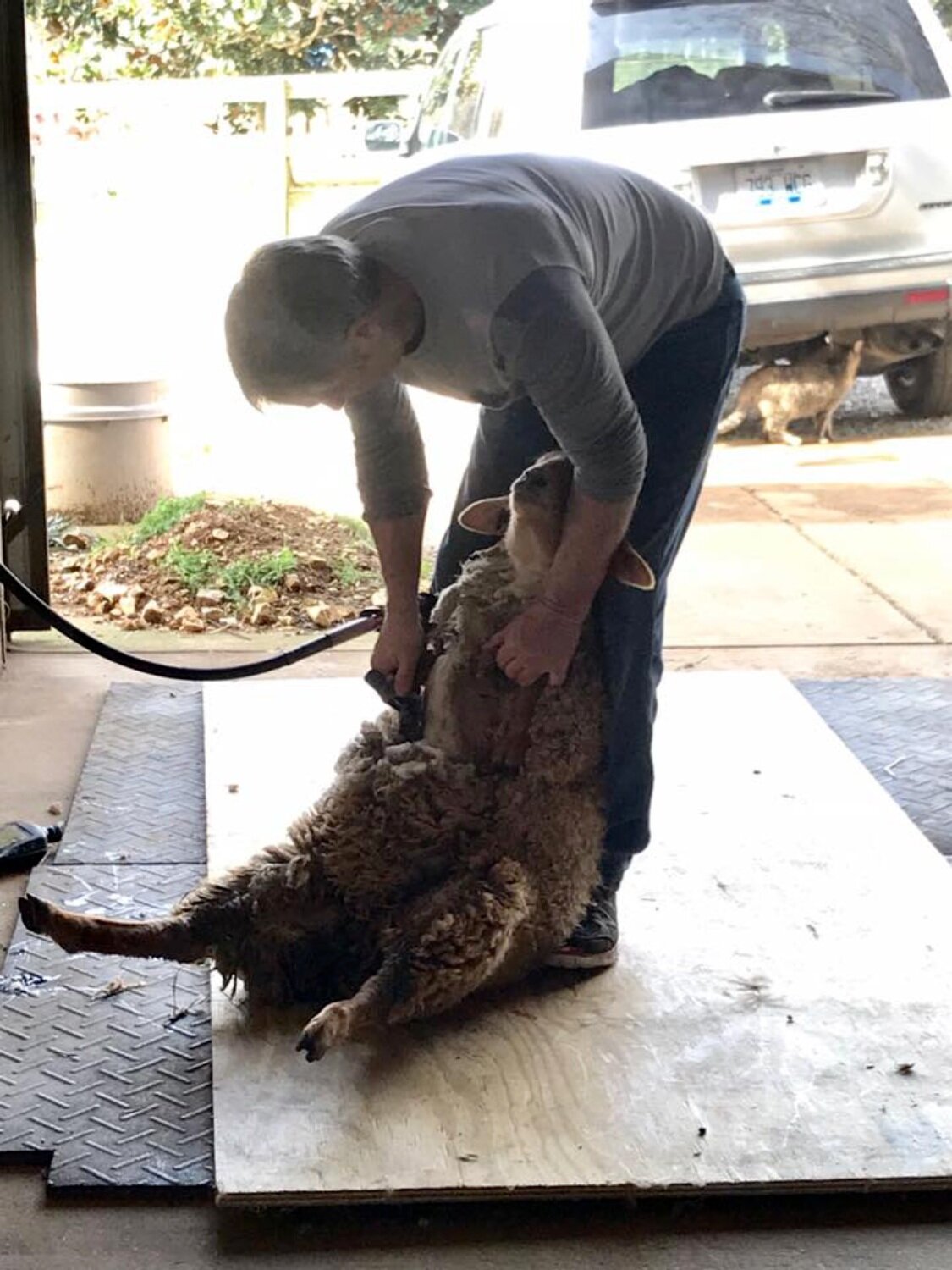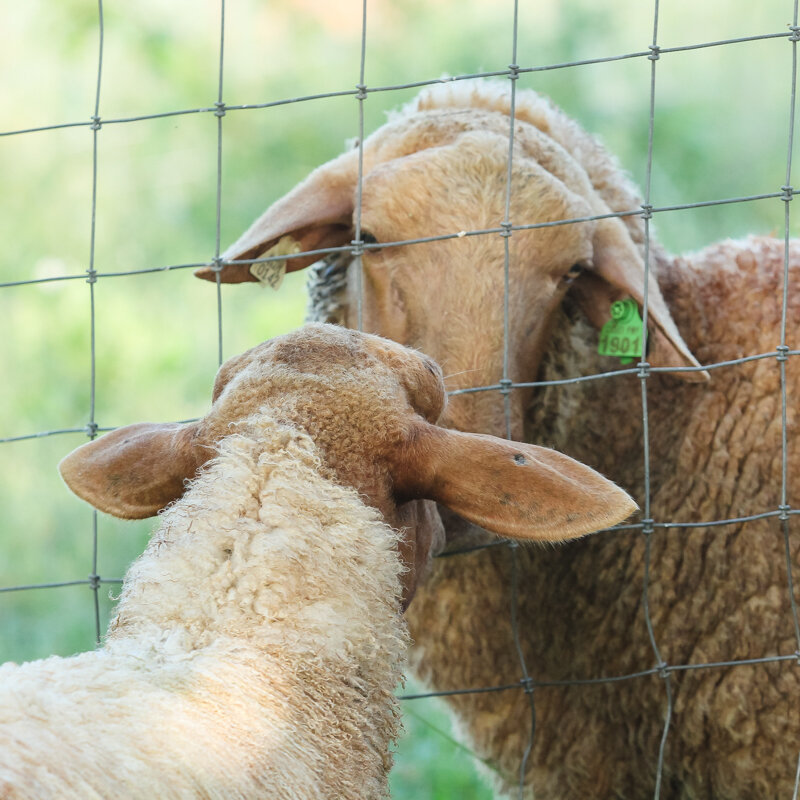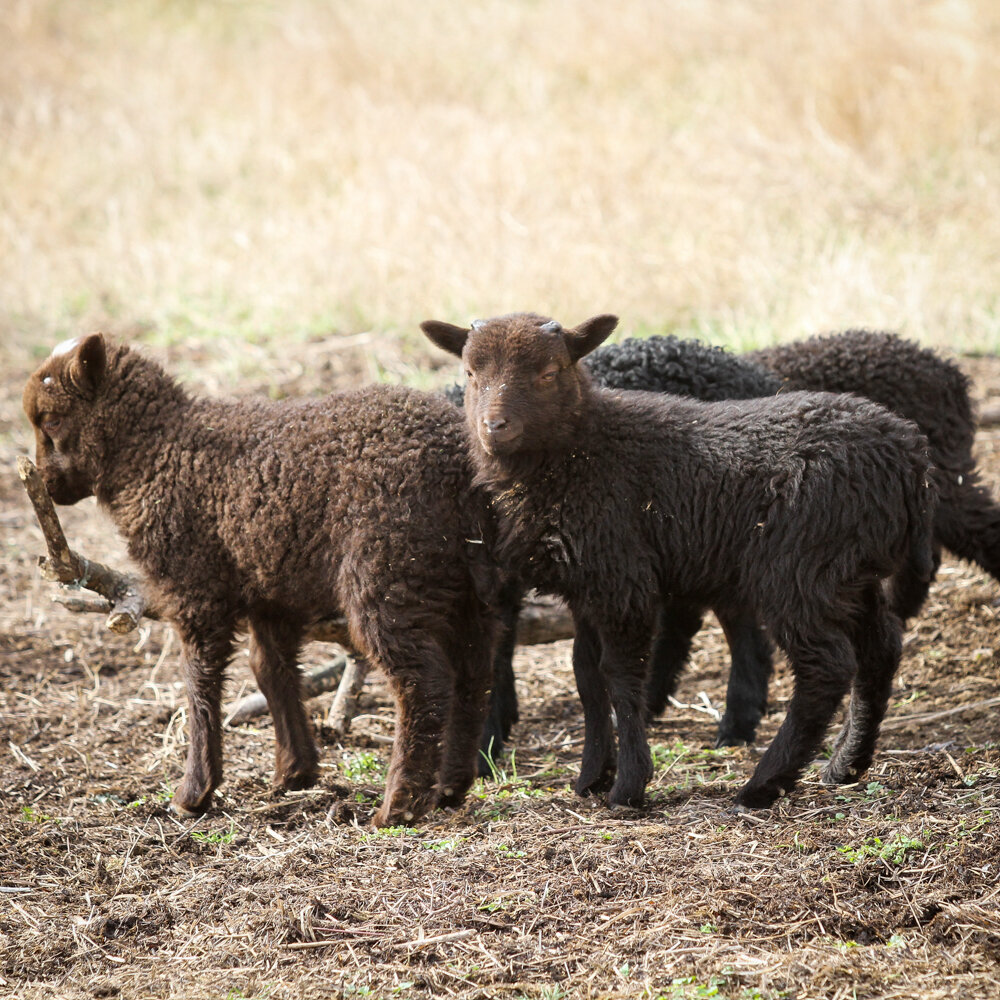For the moment the chickens are actually laying their eggs in their nest boxes. I don’t know what made them decide to lay in their boxes instead of all over the hay barn, but no more daily egg hunt for me. And we are swimming in eggs. Maybe I should try freezing them.
IN THE PASTURES…
Three of the little Shetland lambs have found homes and will be leaving next month. I still have two ram lambs (soon to be wethers if not sold) and the two ewe lambs above available, as well as a proven gray kat ram.
IN THE STUDIO…
I’m weaving a set of towels in blue and white using a Swedish weave structure. It’s very pretty but rather tedious, changing colors every two picks. Do you see the blue ribbon on the left side? That’s how I track my weaving length. Each ribbon is cut to the length I want to weave, so when I reach the end I know it’s time to put in a divider and start a new towel.
As always, when I start a new project I immediately start thinking about the next project. Lots of ideas are floating around in my head, but I’m thinking just some simple stripes next time, maybe in gradient colors. Like a palette of greens or blues. Or maybe neutrals.
IN THE GARDEN…
I don’t know what I was thinking and planted an enormous amount of radishes, so many that I’ve got several quarts fermenting on the counter. I haven’t tried fermenting radishes before, haven’t even tasted them to know if I’d like them or not, but I had to do something with them.
Everything is planted now… tomatoes, peppers, cucumbers, squash, potatoes, broccoli, cabbage, peas, spinach, corn, eggplant, okra, sweet potatoes, onions, melons, beans, and pumpkins. The entire garden is covered in weed block this year. As a rule I like to avoid plastic whenever possible, but if I didn’t use it I’d be weeding for hours every single day and still not stay ahead of the weeds. And in the sweltering, humid summer that just isn’t going to happen. Life’s too short for that kind of misery.
Enjoy your day!






